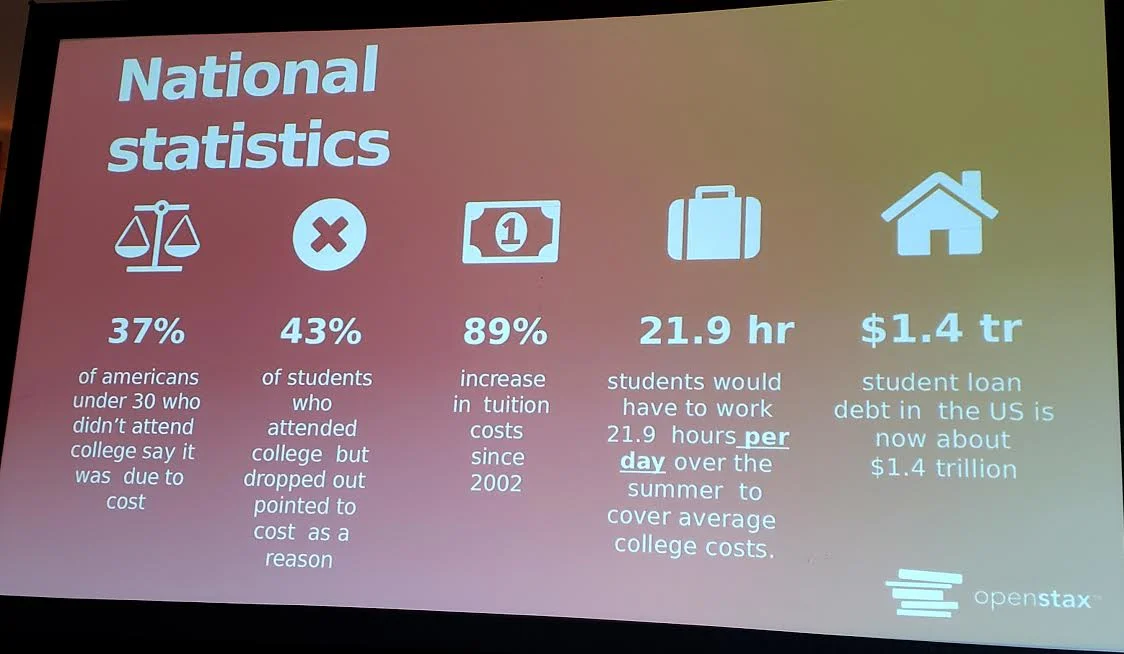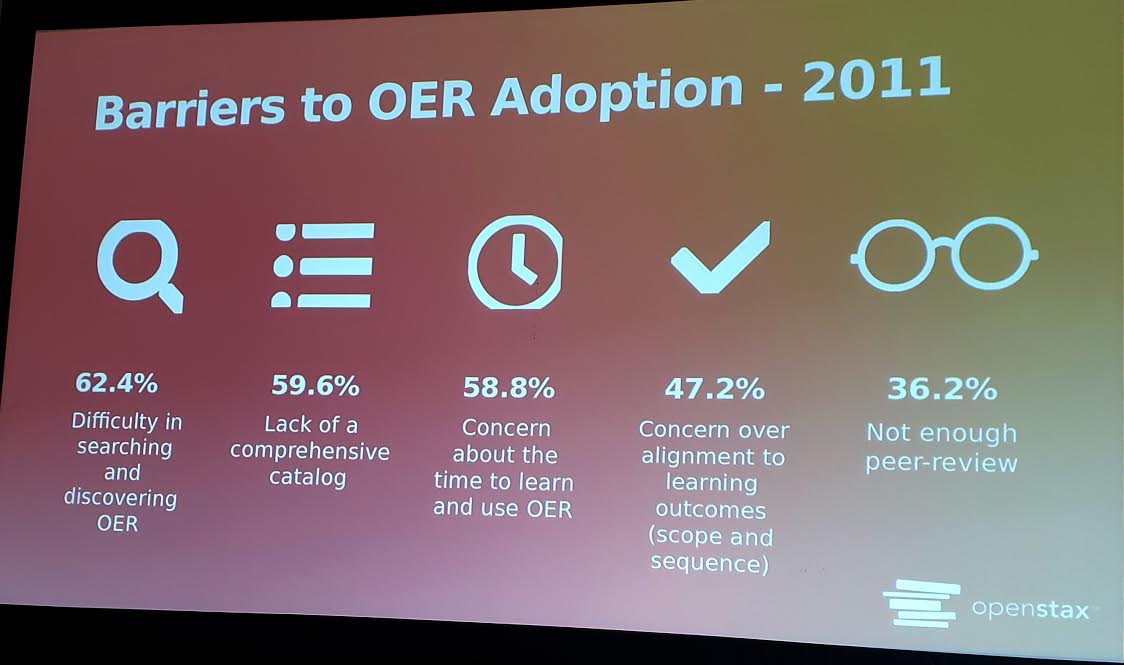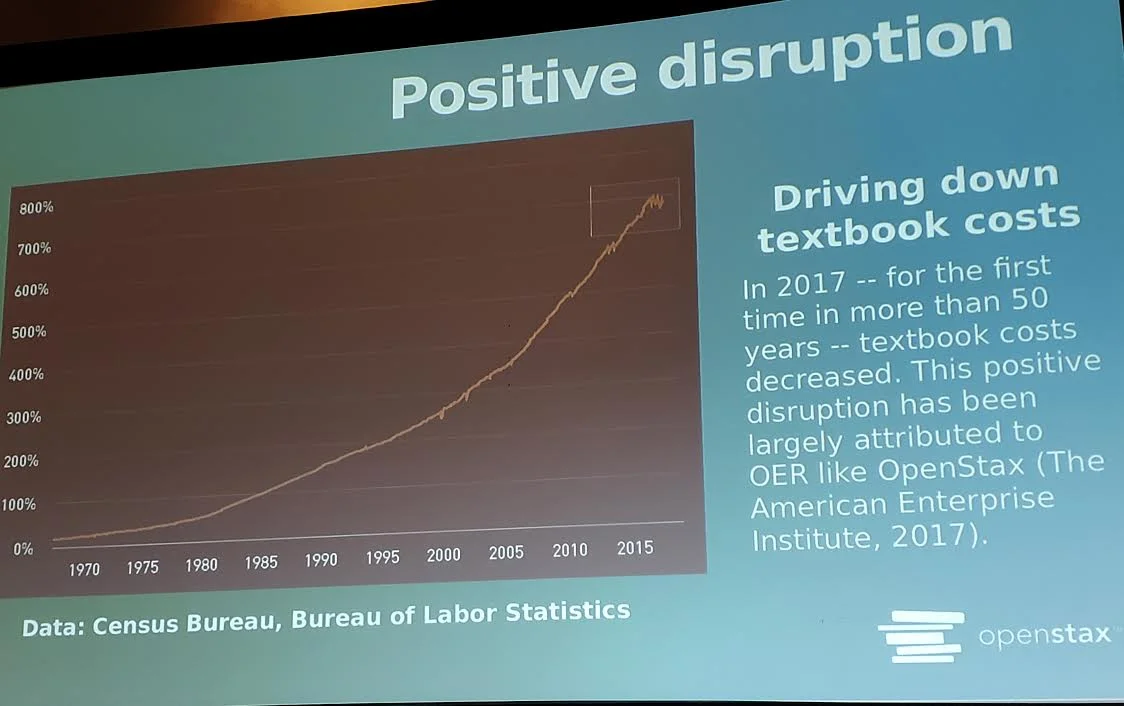
OpenStax Provides Cheaper Textbooks and Better Access for Higher Ed Students
Open source in the academic world means increasing access to content and cutting costs for students.
 Nicole C. Baratta Recently at the Texas Linux Fest, Ross Reedstrom introduced me to OpenStax. I've heard of a lot of open educational resources (OER) but not this particular one. It's certainly a project I'm going to follow now.
Nicole C. Baratta Recently at the Texas Linux Fest, Ross Reedstrom introduced me to OpenStax. I've heard of a lot of open educational resources (OER) but not this particular one. It's certainly a project I'm going to follow now.
OpenStax was founded by Rice University engineering professor Richard Baraniuk in 1999 under the name Connexions. It started like most open source projects: To scratch an itch and address a problem. In this case, Rice University wanted to do something on the web related to education. A grad student suggested that they take the model used to develop Linux and apply it to create textbooks, and Connexions was born. They decided on a license that allowed for reuse with attribution—in essence, this was the first use of the Creative Commons license even before the license existed.

Over the years, the project did have millions of visitors, but it wasn't causing the disruption its developers wanted to see in the textbook industry. They found that its tools weren't easy to use for many website visitors. Although the team had long stated that Connexions was not a publisher, users still wanted books they could print. In 2012, the project rebranded, with new goals:
- increase access to high-quality open educational content
- provide students with financial relief
- increase academic freedom and flexibility for faculty members
- improve completion rates and reduce time to graduation by reducing financial barriers presented by high-cost materials
And with that, OpenStax was born.
While the new branding did attract some new attention, many remained skeptical that OpenStax could meet its goals. In February 2012, Mitch Smith wrote about OpenStax in "Inside Higher Ed," quoting the executive director for higher education of the Association of American Publishers: "Faculty are tough—they’re under massive pressure, and they want the very best for the students. If Rice can meet the quality threshold that faculty demand, then they can participate in the market."

This leads to an important question: Who buys textbooks? Students! Why, then, do faculty members require students to spend exorbitant amounts of money on books that contain the same information as those published on OpenStax?
This concept led OpenStax to start styling books just like traditional printed textbooks. As an example, Ross showed us a print copy of one book that cost just $50 on OpenStax instead of $200 for a traditional copy. Students who don't want a print copy at all can download a free PDF.
Having published 31 books since 2012, is OpenStax having an impact? Are faculty buying in? I'd say so. For the first time in 50 years, the price of textbooks has dropped. OpenStax books are being used around the world, and the team's community outreach members are helping spread the word.
Other innovators are also following suit by introducing more open educational resources. The CARE Framework brings these OER sites together "to articulate a set of shared values and a collective vision for the future of education and learning enabled by the widespread adoption and use of OER."

We're also starting to see an impact at the legislative level, with states calling for consideration of open textbooks and federal grants being offered—and it all started with an itch!
Where do we go from here?
In addition to adding new titles to the library, OpenStax plans to follow a pragmatic approach to openness. They realize that people come to OpenStax for different reasons: Some want the ability to customize content, some want to build content from scratch, some want to pull content into different tools—and some simply want free stuff. OpenStax will address all of these needs by focusing on access first, followed by participation and empowerment tools.
To help out, you can find the project on GitHub.
- Tags:
- CARE Framework
- cheaper textbooks
- Connexions
- Creative Commons license
- higher ed
- Mitch Smith
- Nicole C. Baratta
- Nicole C. Engard
- OER empowerment tools
- OER participation tools
- open education
- Open Educational Resources (OER)
- open source
- open source project
- open textbook access
- Open Textbooks
- OpenStax
- Rice University
- Richard Baraniuk
- Ross Reedstrom
- Texas Linux Fest
- Login to post comments